The Plateau Culture Area is the area between the Cascade Mountains and the Rocky Mountains in Washington, Oregon, Idaho, British Columbia, and Western Montana. From north to south it runs from the Fraser River in the north to the Blue Mountains in the south. Much of the area is classified as semi-arid. Part of it is mountainous with pine forests in the higher elevations.
While much of the Plateau Culture Area constitutes a dry region characterized by a sagebrush-Juniper steppe area with pine forests at the higher levels, there are portions of the area which do not fit this description. In the northern portion of the Plateau Culture Area, there is a temperate rainforest with higher precipitation.
The High Plains Museums just south of Bend, Oregon, has a number of displays dealing with the spirituality of the Plateau Indians.
Sweatlodge
An important element in Plateau spirituality and healing is the sweatlodge. Among many Plateau people the sweatlodge is a spirit or deity. Salish author and political leader Mourning Dove writes:
“During times of affliction or troubles in life, the Indian always turned to the sweatlodge to make a prayerful appeal. It was a place that made no distinctions. All could go there: rich or poor, weak or strong, simple-minded or great in knowledge, commoner or chief, uneducated or adept in shamanistic wisdom. All were equal to enter the lodge to pray and worship our Creator. There were no lines drawn between any of them: male or female, old or young. All had the same privileges to enter a church open to the public, regardless of race.”
Even while the government attempted to stop all Native American spiritual activities from 1883 to 1934, the sweatlodge continued to be used. According to the Museum display:
“Despite major cultural changes brought on by reservations, sweat houses still symbolize Plateau spiritualism and identity. They are universally recognized as sacred places where minds and bodies are cleansed in preparation for daily life and ceremonial activities.”
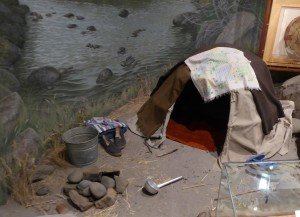
A sweatlodge is shown above. This sweat house was built by Wilfred and Geraldine Jim of Warm Springs.
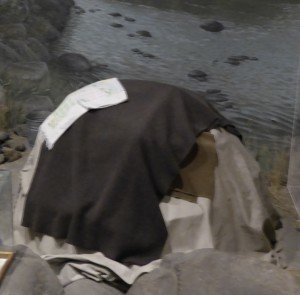
Among the Plateau tribes, the sweatloge is usually located near water, such as a creek or river. Among the Salish-speaking people of the Plateau, the sweatlodge is often oriented downstream.
The sweat was an important part of hunting rituals. Before hunting, the hunters would sweat to cleanse themselves spiritually and mentally and to eliminate the human scent.
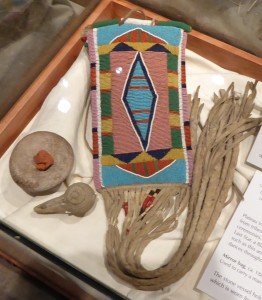
The beaded bag shown above, made in the 1880s, was used to carry personal items, included items used ceremonially. The stone vessel next to it was used for face paint.
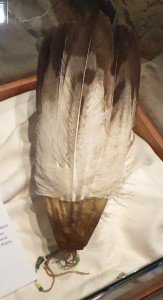
Fans, such as the eagle feather fan shown above, are important in ceremonies and dances.
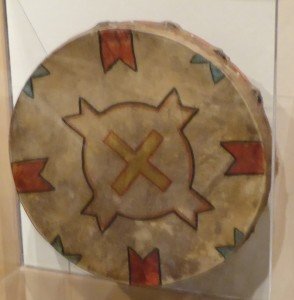
Drums are an important part of Plateau spirituality.
Revitalization Movements
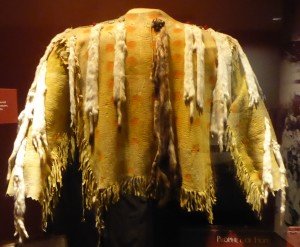
Shown above is a Cayuse Dreamer Shirt. The Dreamers were followers of Smohalla.
According to the museum display:
“Smohalla, a prophet of the Waashat religion, provided one of the strongest voices of hope to the Plateau Indians who lives were upturned by the early reservation years. Smohalla sought to revitalize Waashat, the traditional faith of the Plateau people, through singing, drumming, dancing and specific words of prayer. His followers were called ‘Dreamers’ because they believed the truth came through dreams.”
According to anthropologists Deward Walker and Helen Schuster, in their chapter on Plateau religious movements in the Handbook of North American Indians:
“Washat is a complex mixture of older elements including vision questing, tutelary spirit power, and, in some locations, in a distinctive nativistic framework in which the tribal language, behavioral norms, morality, relations, beliefs, and customs are perpetuated.”
The ceremony is carried out in a longhouse and seven drums are used. One Yakama Washat leader, speaking in the 1960s, said:
“This is what we believe; this is what is important: Cooperation, Sharing, Hospitality, Reciprocity, and Conservation, never take more than you need.”
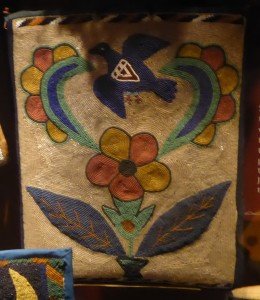
Shown above is a Dreamer Religion bag.
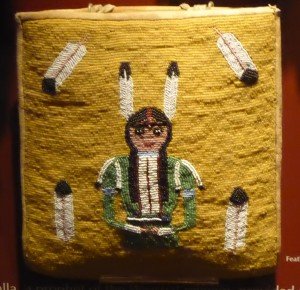
Shown above is a Feather Religion bag made about 1910. The Feather Religion was founded by Jake Hunt (Klickitat) in 1904 as a way to heal sickness and alcoholism with traditional methods.
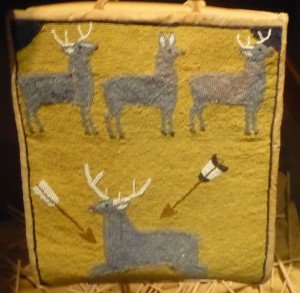
Shown above is another Feather Religion bag. The animal motifs and yellow color symbolize the traditional relationships with nature and the sun.
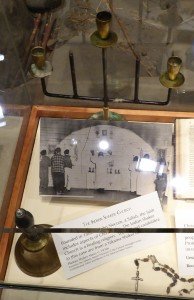
The bell and the candelabra shown above are important in the Indian Shaker Church. This church was founded in 1882 by John Slocum (Salish) and incorporates some aspects of Christianity. The focus of the Indian Shaker Church is on healing.
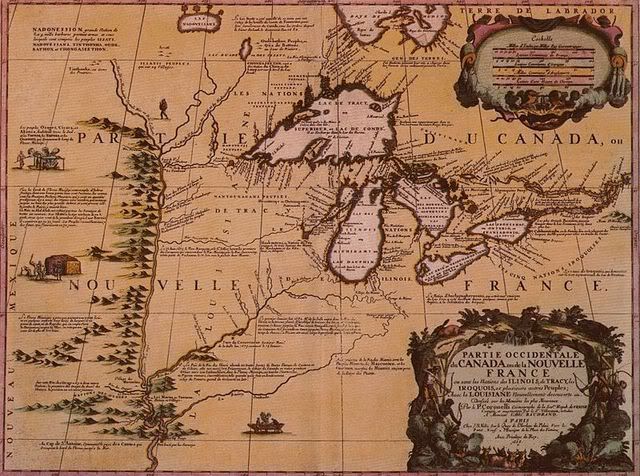
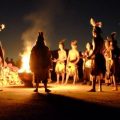
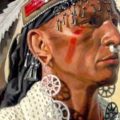
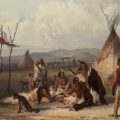
Leave a Reply